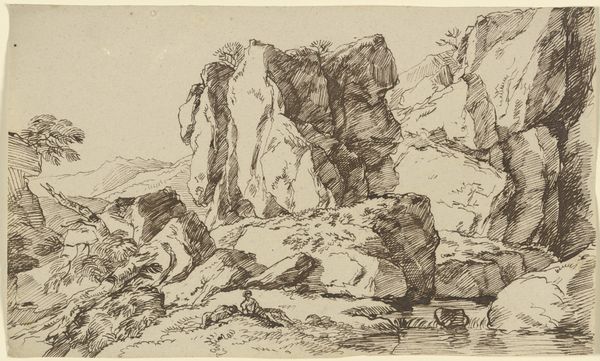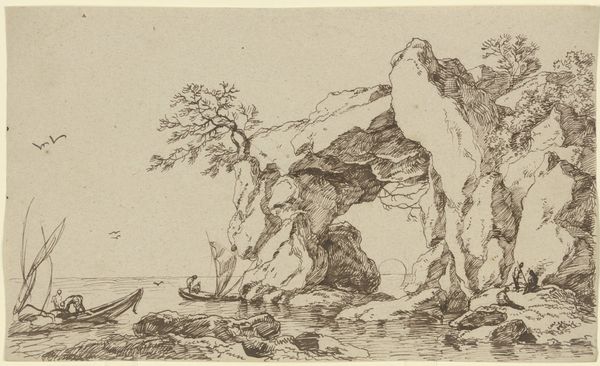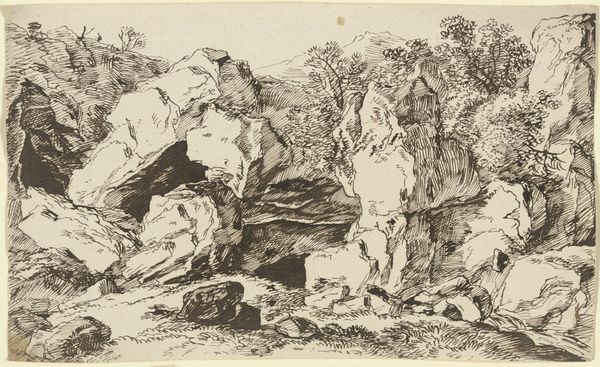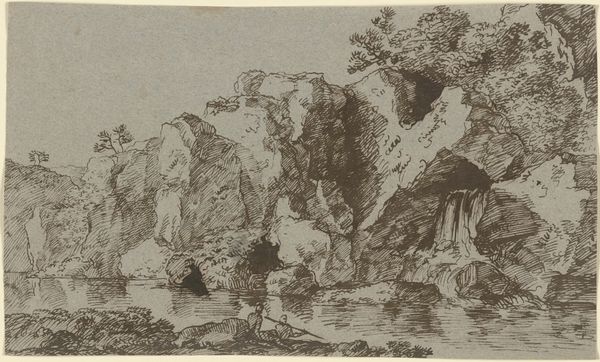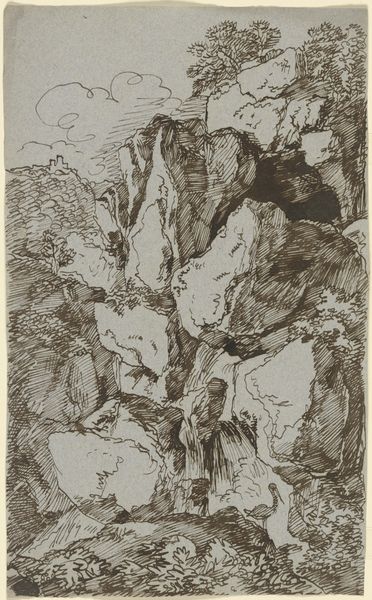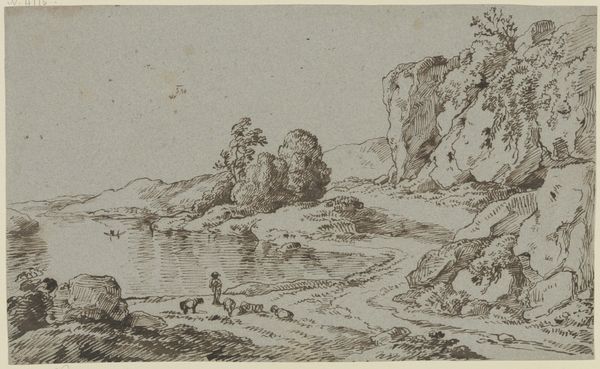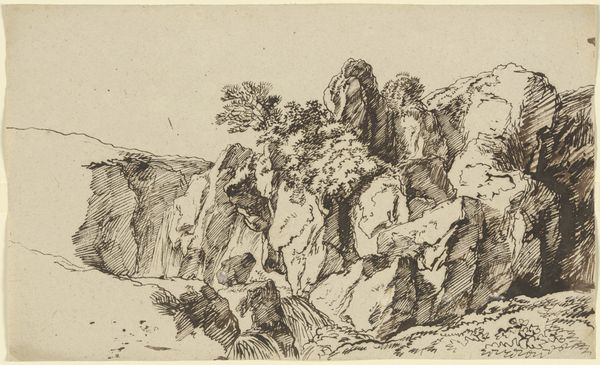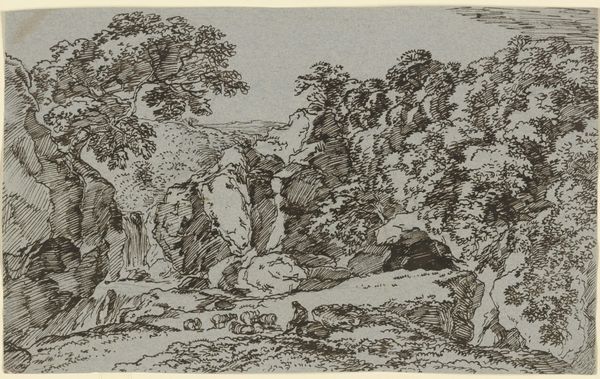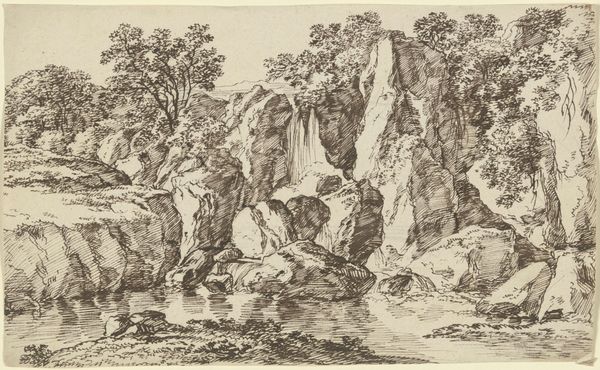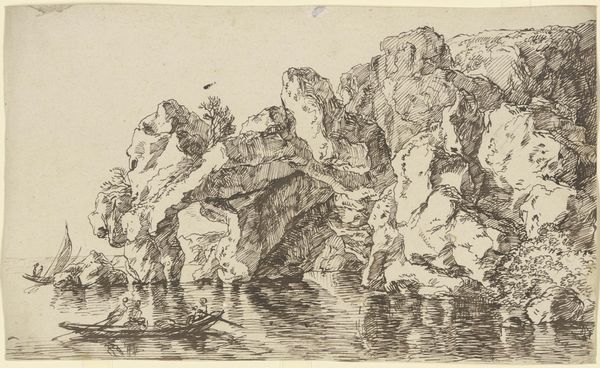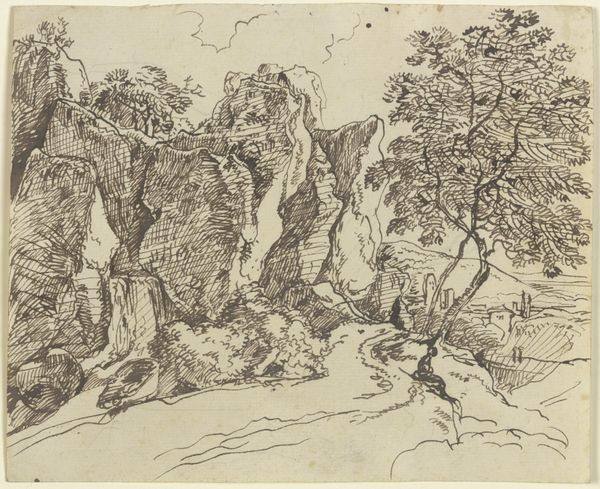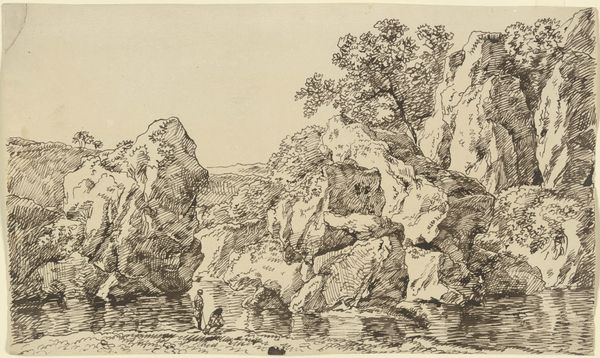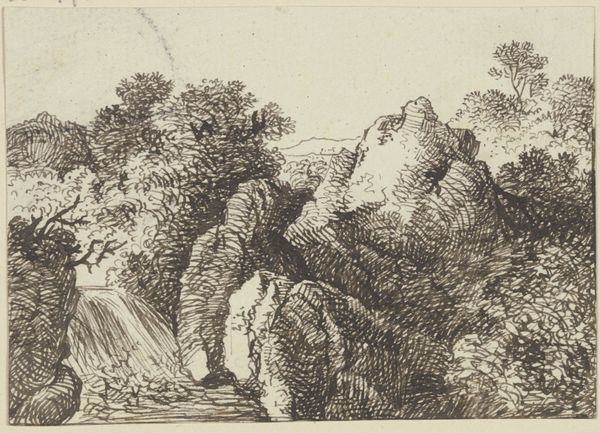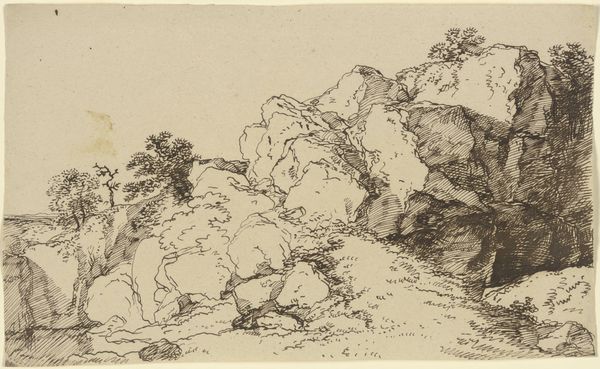
drawing, ink
#
drawing
#
landscape
#
figuration
#
ink
#
romanticism
#
line
#
realism
Copyright: Public Domain
Curator: Welcome. Let's take a moment with this intriguing drawing by Franz Kobell titled "Rocky Coast with Dead Vegetation and Grazing Animals," housed here at the Städel Museum. It's a rather captivating landscape rendered in ink. Editor: My goodness, the way the light struggles through those rocks! It feels like witnessing nature’s stoic drama. Stark beauty, really. Almost haunting, yet there's life, with the animals down there. What era is this from? Curator: We don’t have an exact date for it, but Kobell was active in the late 18th and early 19th centuries. Notice the meticulous line work. It gives a sense of geological time and weight to those rock formations, right? All those tiny details, they make up the monumental forms. The bare vegetation really contributes to a scene of untamed natural forces. Editor: I am fascinated by the technique itself. I see ink, but how many different nibs did he use? What type of paper? This image suggests labor – long hours of applying, removing, reworking this mass of black lines to create light, depth, mass, weight... What social or economic role was this piece made to fulfill? Curator: It definitely invites contemplation about the interplay between the sublime and the everyday. It speaks to this Romantic era fascination with the awesome power of nature and its humbling effect on humankind, you see? Editor: Yet also hints at the slow violence humans enact on their landscape, this transition and manipulation from the "sublime and powerful" into grazing fields for profit. What labor was displaced, for instance, so these animals could graze? Is he acknowledging human economic networks or turning a blind eye, focusing solely on picturesque aesthetics? Curator: Well, thinking about the image overall now, I get this sense of the fragility of existence – the barren landscape, a kind of mortality – but simultaneously, the persistence of life goes on with the grazing animals. Perhaps it is also speaking about the cyclical nature of life, that from desolation, life springs forth once more. Editor: Right. This landscape serves as a reminder of the raw materials available for economic growth. An ink drawing seems almost too precious of a medium to portray what is, essentially, resources. The "dead vegetation" for example, acts a silent invitation into our current discussion regarding the consequences of climate crisis... What purpose did art such as this serve then, if it didn't intend to criticize or provide economic alternatives? Curator: You know, your perspective gives me food for thought. There is so much more there than at first glance. Editor: Absolutely, Franz Kobell invites the kind of probing considerations regarding human/nature interaction that stay with us long after our visit here.
Comments
No comments
Be the first to comment and join the conversation on the ultimate creative platform.
